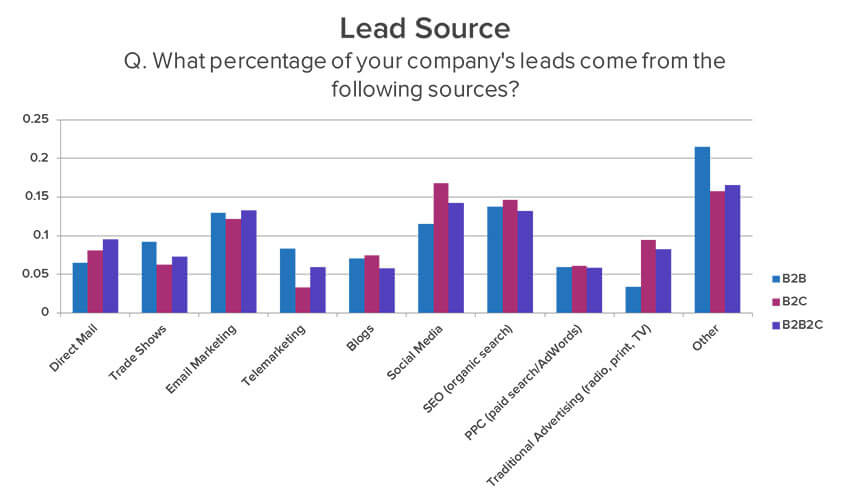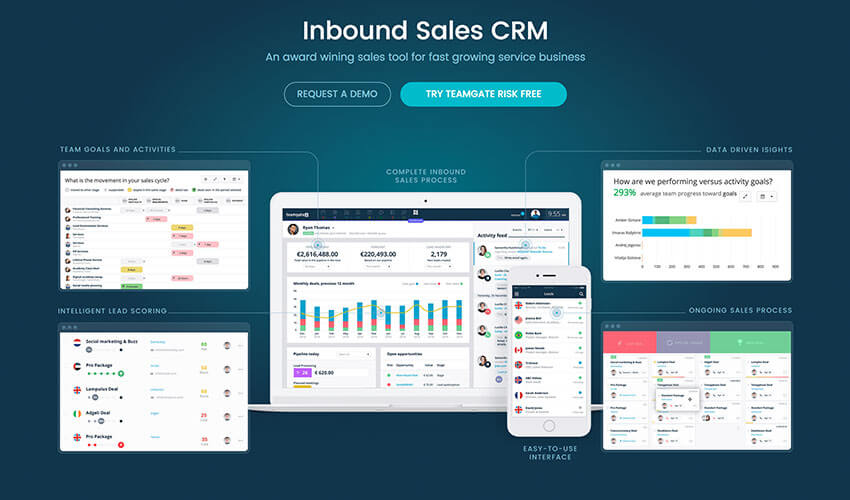The nature of B2B sales has experienced a seismic shift. And since the world has apparently moved on from the “Always be closing” mentality, some B2B businesses find themselves in a bit of a pickle, scrambling to adapt to the new buyer-seller relationship.
People don’t want to be pitched, qualified, or closed. They want to be helped.
The most successful salespeople these days are living by the “teaching is the new pitching” mantra. Having taken up a more consultative approach to selling, they’re using new tactics to win business and close deals.
A money-making B2B sales strategy is not a miracle. Use these eight practical steps to sharpen your selling prowess and level up your game.
Learn pre-framing
Pre-framing is one of the best-kept secrets of the sales world. Even if you haven’t heard of it, you have most likely experienced it at some point in your life. When successfully mastered, this technique puts salespeople in control, giving them full power to steer the sale the way they want it.
Wonder what this clever technique is all about? In essence, pre-framing is the act of directing someone’s focus in advance and influencing the results you want to get from a particular situation, interaction, experience, interview, and so on. Salespeople achieve that by letting their prospective clients know exactly what is going to happen before it happens and what it is going to mean.
We all know that sinking feeling of having to make a decision when we’re unsure and feel completely out of our comfort zone. The natural response in these types of situations is to step back and reject whatever is causing the feeling. For a salesperson, that’s a lost sale and a lot of disappointment. So to tackle buyer objections and eliminate potential doubts and hesitations in advance, salespeople invoke the pre-framing technique and deal with the challenges while they are either insignificant or non-existent. They set the scene on their terms, address common objections and create ways of pre-framing them to influence people in a positive way.
A simple example of pre-framing in sales can be something along the lines of, “I know you think this is too expensive, but if we could get you a discounted price, would you see yourself using a service like this?”
What do good frames include? Most often they make situations more ‘human’ by embracing emotion, vision, and ownership. The goal is to make the context more engaging and relatable to make people care about what you’re selling.
You will be able to overcome client objections much easier when you learn how to pre-frame a sales call or meeting. The difference between winning and losing a deal will lie in the story you set up for your customers.
Do you have a CRM that keeps you organised?
The most user-friendly CRM on the market. 14-day free trial.
Start Free TrialPainless setup, no credit card required
Take advantage of weak ties when prospecting
The strength of your weak ties determines how far you can extend your network beyond your normal reach. In his paper on the strength of weak ties, Mark Granovetter refers to strong ties as your ‘friends’ and weak ties as your ‘acquaintances’. The easiest way to look at weak ties is to think about your ‘LinkedIn’ account. Are all of your connections on LinkedIn strong ties? Do you consider those people friends? Or are they colleagues with who you occasionally mingle? You will most likely find several sets of weak ties once you start inspecting your social media networks.
In sales, weak ties represent the opportunity to greatly expand your reach and increase the potential of finding new clients. And in B2B sales, in particular, connections mean a great deal when it comes to developing and maintaining relationships with clients and winning new deals. Sometimes a friend of a friend’ can be all it takes to land an important client or close a huge deal. Or at least get through the door to be able to pitch a new prospect.
Generally, the importance of strong ties increases as we progress in the sales process. At the prospecting stage, though, weak ties can prove to be of great value. They typically act as connectors to other social groups, opening new worlds of opportunity to hungry salespeople. If we only relied on strong ties, we’d always be simmering in the same juice – talking to the same people about the same stuff. In the social economy world that we live in today, weak ties are critical to getting access to important information early on, finding work, and winning new business.
So when prospecting, tap into your social networks to make those weak ties work for you – don’t be shy to ask for introductions or recommendations; only by extending your reach beyond the first ‘layer’ of friends can you generate new leads and discover new nuances of influence.
Polish your sales script
There are so many no-nos when it comes to writing a good sales script that I’m tempted to jump straight into listing the most common mistakes. A poor sales script would typically entail the following:
- It’s sketchy about who you are and why you’re calling. The goal is to ‘get through rather than to have a proper conversation.
- It’s a hideous monolog. Aim to ask lots of questions to connect with prospects early on and avoid talking to people.
- It paraphrases what the prospect does instead of showcasing your knowledge of their pains and struggles. Focus on telling the prospects how you can help rather than what they do.
Image Source: Pexels
A good sales script can be your best friend, but it can also be your worst enemy if you fail to write one that meets customer expectations. A successful script will always focus on confirming the next step – whether that’s setting up a face-to-face meeting, video call, or email follow-up, rather than pitching on the spot. To put your prospect at ease right from the start, make sure your script answers these questions truthfully:
- Who are you?
- Why are you calling?
- How does the prospect benefit?
- What are you asking for?
Although a little time-consuming, the best way to make sure you cover the most important points and touch on the prospect’s pain points is to write a personalized outline of what you want to say. Even if the conversation takes a different course, you will always have a clear plan in front of your eyes, keeping you focused on your main goal.
Take a few minutes before each call to research your prospect: their hobbies and interests, any mutual connections, issues and pain points, and so on. Imagine if you went to the same school or are huge fans of the same sports team – that could be a wonderful icebreaker.
Be prepared to face objections and know how to overcome them. One of the best formulas used by salespeople for this purpose is called the Best Friend Formula, which involves three steps:
- Relate: demonstrate your understanding.
- Bridge the gap: make it easy for them to move forward by offering new information.
- Ask again: cement their commitment.
This formula works perfectly if you’re facing objections like “we already work with your competitor”, “call back in x months, this is not a priority right now”, “email me with more information”, and “thanks, but we’re not interested”.
Related: Stop Cold Calling. Work Your Inbound Leads Instead
Qualify leads
A study by HubSpot found that the best three lead sources for B2B companies are SEO (14%), email marketing, (13%), and social media (12%).
Image Source: HubSpot
However, before you put a lead generation process in place, take some time to think about and clearly define what a “good lead” means to you and your business. It’s best to set specific criteria that will help you identify and qualify leads for your business, as with the vast variety of terms being used to describe the same thing (prospect, lead, suspect, opportunity, etc.), sales and marketing teams often struggle to communicate effectively. Agree on what criteria a lead needs to meet to qualify and stick to that throughout the entire process.
That lead qualification is a vital part of B2B sales confirms these self-explanatory statistics:
- 73% of all leads are not sales-ready. (Marketing Sherpa)
- 96% of your website visitors are not ready to buy. (Marketo)
- The biggest challenge for 61% of B2B marketers is generating high-quality leads. (B2B Marketing Community)
Without a robust lead qualification process, B2B businesses would waste most of their time chasing people who are not ready to buy. It’s not only a huge waste of time, money and resources but could also be incredibly demotivating.
BANT is a simple but effective set of questions used by salespeople to qualify leads and move deals forward:
- What is your Budget?
- Who has the Authority to make the decision?
- Do you have a Need for this solution?
- What’s your implementation Timeline?
It’s also highly recommended to establish a lead scoring system and continue grading the leads until they convert. This way your sales team can focus on the most promising leads and hopefully, close more deals.
Close
A study by CEB showed that an average B2B buyer is 57% through the buying decision before engaging with a salesperson. That’s a massive change since the days when buyers used to rely thoroughly on the information and help from sales reps needed to make a decision. To be relevant and useful in the newly established buying processed, salespeople must find a way how to provide more value and assist customers during their journey.
Image source: Pexels
That’s why HubSpot insist that BANT isn’t good enough and have therefore given it an upgrade. GPCTBA/C&I is a process HubSpot have developed internally to be used during an exploratory call. Here’s a breakdown of this three-part framework.
- GPCT (Goals, Plans, Challenges, Timeline). The first opportunity for a sales rep to establish herself as an advisor is at the Goals stage. Ask about their and the company’s goals, priorities for the year and revenue objectives. You want to identify quantifiable goals that your prospect needs to reach and provide help if the goals need resetting or quantifying. The next stage is Plans where you should start assessing the prospect’s plan for hitting their goals and their chances of implementing it. The Challenges stage is where the sales rep should try to seize the day and figure out what keeps the prospects from reaching their goal. This is when you can determine whether your product or service is the right solution for the prospect. Timeline is obviously focused on figuring out timing and determining whether it is the right time to offer your solution.
- BA (Budget & Authority). Once you finish qualifying the lead using the GPCT approach, it’s time to start talking about how the prospects will make the decision and what budget the money will come out of. Budget is the critical part where you learn what your prospect’s financial capabilities are and whether you’ll be able to offer a solution. Then move on to establishing the decision maker and go through GPCT with them if it’s a different person.
- C&I (Negative Consequences and Positive Implications). The last stage will focus on establishing your value proposition. Find out what will happen when your prospects reach or don’t reach their goals and how your product can be of value to them.
Use S.M.A.R.T. goals
SMART is a framework developed to help people set goals and objectives more efficiently. It can be highly effective because it keeps everyone focused and on the same page. A SMART goal stands for:
Specific – use clear language to communicate what is expected, why it is important, who is involved and where it is going to happen;
Measurable – the criteria for measuring the progress and reaching your goal should be clearly defined;
Attainable – your goal should be realistic;
Relevant – your goal should matter to your business;
Timely – you should have a clear deadline for reaching your goal.
SMART goal setting is a surefire way to concentrate your efforts on tasks and projects that aid in achieving what you planned. It’s also a great way to identify and work on your weaknesses.
Master your chosen CRM software
Image source: Teamgate
The B2B sales funnel is a much more complex beast than it might seem at first. The metaphor somehow implies that leads continuously trickle into the funnel and, at some point, eventually emerge as customers. In reality, prospects can get stuck at any stage or drop out altogether never even reaching the purchase stage. For B2B companies it’s often tricky to untangle this all-mysterious funnel and see where their prospects are, how they got there and why. This is where CRM comes in to save the day.
CRM systems help B2B businesses track opportunities through every step of the funnel and replace the guesswork with easily observable and measurable sales processes. By adopting and mastering a CRM software of your choice, you will know exactly how, when and why your prospects travel through the sales funnel and what you need to do to help them progress to the final stage. More visibility over leads and pipeline will keep your sales team up-to-date and in check and more reliable data and reporting will help you figure out which metrics make a difference to your bottom line. The bonus is less admin and increased efficiency (once you reach the CRM master level and actually know what you’re doing).
Track your ROI and iterate
When you implement a CRM software, lead tracking will be an easy thing to do. This will not only tell you where the leads are coming from, but will help increase sales by directing sales reps to customer segments that are most profitable. Once you have a clear idea of what generates the best ROI, you can focus your efforts on the best performing channels as well as add new ones to the mix.
Different segments of your customer base will require a different approach, so don’t settle on one-size-fits-all solution. Ensure you’re closely following the buyer journey and catering to customer needs.
Conclusion
Although we think that more information makes the buying experience easier and motivates the customer to follow through on their purchase intentions, a CEB research shows that customers are deeply stressed, uncertain and paralyzed by the sheer amount of information. To avoid overwhelming your customers with needless decisions, aim to simplify your buying process using a prescriptive approach.
The same CEB study found that ‘a proactive, prescriptive approach increases purchase ease by 86%.’ A prescriptive approach requires businesses to give clear recommendations backed by a specific rationale, present a concise selection of options, and explain the complex parts of the sales process meticulously. Purchase ease is by far the biggest driver of deal quality, with customers perceiving prescriptive salespeople as being more helpful and keeping ahead of everyone else.
Satisfying customers’ every request for information doesn’t make buying easier. On the contrary, it can quickly get too overwhelming. By mastering pre-framing and taking advantage of your weak ties network, you can also eliminate some obstacles and reduce the buying tension. In this article, we have covered eight practical steps you can take to calibrate your B2B sales approach to achieve profitable, long-term outcomes. Stay tuned for more new age sales advice coming soon!





